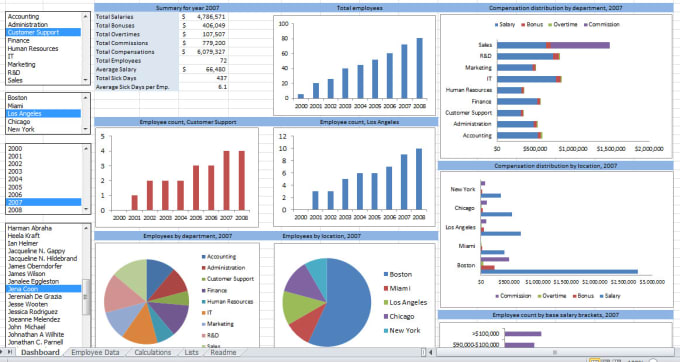How to Analyze Large Datasets in Excel: A Step-by-Step Guide|2025
Master how to analyze large datasets in Excel with this step-by-step guide. Learn to use PivotTables, Power Query, and advanced formulas for data cleaning, visualization, and actionable insights to excel in your projects!
Analyzing large datasets can be daunting, but Microsoft Excel offers a powerful suite of tools to simplify the process. This step-by-step guide will walk you through how to organize data in Excel for analysis, use Excel’s built-in features, and explore case studies in data analysis using Excel. We’ll also touch on why getspsshelp.com is the go-to resource for your data analysis questions.
Step 1: Organize Your Data
Proper organization is the foundation of effective data analysis. Here’s how to organize data in Excel for analysis:
Clean Your Data
- Remove Duplicates: Navigate to the “Data” tab and use the “Remove Duplicates” feature.
- Handle Missing Data: Use filters to identify missing values and decide whether to fill, remove, or leave them.
- Standardize Data Formats: Ensure dates, numbers, and text are in consistent formats.
Structure Your Data
- Use Tables: Convert your dataset into a table by selecting the data and pressing
Ctrl + T. Tables make it easier to manage and analyze data. - Use Headers: Always include clear and descriptive headers for each column.
Step 2: Use Excel’s Built-In Tools
PivotTables
PivotTables are one of the most powerful tools in Excel for summarizing and analyzing data.
How to Create a PivotTable:
- Select your dataset.
- Go to the “Insert” tab and click “PivotTable.”
- Choose where to place the PivotTable and click “OK.”
- Drag fields to the “Rows,” “Columns,” and “Values” areas to create your summary.
Data Analysis ToolPak
The Data Analysis ToolPak provides advanced statistical analysis tools.
How to Enable and Use the Data Analysis ToolPak:
- Go to “File” > “Options” > “Add-ins.”
- Select “Excel Add-ins” and click “Go.”
- Check “Analysis ToolPak” and click “OK.”
- Access it from the “Data” tab by clicking “Data Analysis.”
Common Tools in the Data Analysis ToolPak:
- Descriptive Statistics: Provides a summary of central tendency, variability, and distribution.
- Regression Analysis: Helps identify relationships between variables.
Step 3: Visualize Data
Charts and Graphs
Visual representations can make large datasets more understandable.
How to Create a Chart:
- Select your data.
- Go to the “Insert” tab and choose a chart type (e.g., bar, line, pie).
- Customize the chart using the “Chart Tools” for better clarity.
Conditional Formatting
Highlight trends and patterns in your data using conditional formatting.
How to Apply Conditional Formatting:
- Select the data range.
- Go to the “Home” tab and click “Conditional Formatting.”
- Choose from pre-defined rules or create custom rules.
Step 4: Perform Advanced Analysis
Using Formulas and Functions
Excel provides a wide range of functions for data analysis.
Commonly Used Functions:
- SUMIFS: Adds values that meet multiple criteria.
- AVERAGEIFS: Calculates the average for cells that meet multiple criteria.
- VLOOKUP/HLOOKUP: Searches for a value in a table and returns corresponding data.
- INDEX and MATCH: A more flexible alternative to VLOOKUP.
Using Power Query
Power Query allows you to clean, transform, and load data from various sources.
How to Use Power Query:
- Go to the “Data” tab and click “Get Data.”
- Choose your data source and load the data into Power Query.
- Perform transformations like removing columns, filtering rows, and creating calculated columns.
- Load the transformed data back into Excel.
Step 5: Case Studies in Data Analysis Using Excel
Case Study 1: Sales Data Analysis
A retail company uses Excel to analyze sales data across different regions.
Steps:
- Import data into Excel and clean it.
- Use PivotTables to summarize sales by region and product.
- Create charts to visualize sales trends.
- Apply conditional formatting to highlight top-performing regions.
Case Study 2: Financial Analysis
A financial analyst uses Excel to evaluate company performance.
Steps:
- Gather financial statements and import them into Excel.
- Use formulas like
ROE = Net Income / Shareholder's Equityto calculate key metrics. - Use Power Query to consolidate data from multiple files.
- Create dashboards using charts and PivotTables.
Step 6: Downloadable Resources
Excel for Data Analysis PDF
For a comprehensive guide, download our “Excel for Data Analysis PDF,” which covers advanced topics and practical examples.
Large Data Set Excel Download
Practice your skills by downloading a large dataset from our website. This dataset is specifically designed for practicing data analysis techniques.
Why Choose getspsshelp.com?
If you’re looking for expert guidance on data analysis, getspsshelp.com is the best resource. Here’s why:
- Expert Support: Our team of professionals offers personalized help on all aspects of data analysis.
- Comprehensive Resources: Access a wealth of tutorials, case studies, and downloadable resources.
- User-Friendly: Our website is designed to make learning easy, with step-by-step guides and interactive content.
- Proven Track Record: Thousands of students and professionals trust getspsshelp.com for their data analysis needs.
Whether you’re new to Excel or looking to deepen your expertise, getspsshelp.com provides the tools and support you need to succeed in your data analysis projects.
Conclusion
Analyzing large datasets in Excel doesn’t have to be overwhelming. By organizing your data, leveraging built-in tools, and applying advanced analysis techniques, you can uncover valuable insights and make informed decisions. For further learning and expert guidance, visit getspsshelp.com, your ultimate resource for data analysis support.
Needs help with similar assignment?
We are available 24x7 to deliver the best services and assignment ready within 3-4 hours? Order a custom-written, plagiarism-free paper



